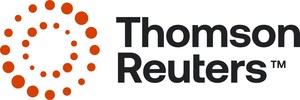Thomson Reuters Research Confirms China Leads World in Patent Applications, Trademark Filings
LONDON, December 20, 2011 /PRNewswire/ --
- Patent and Trademark Analysis Evaluates China's Innovation & Growth Strategy: Nation Needs Broader External Focus
Thomson Reuters announced new findings on Chinese innovation today with the publication of research that analyzes global patent and trademark trends. By tracking published patent applications, examining real-world trademark and copyright infringement issues and comparing the government policies and long-term innovation strategies of China to other world leaders, Thomson Reuters research suggests that although China leads the world in patent and trademark filings, its status as a global player still faces challenges.
The following are some of the key findings of the new research:
- China Now Leads World in Patent Filings: Published patent applications in China increased by 16.7 percent between 2006 and 2010; and this year's patent activity secures China's status as the world leader in patent application volume, as previously predicted by Thomson Reuters. Thomson Reuters projects that China will publish 493,000 patent applications annually by 2015.
- Trademark Applications Surge: Since 2000, the number of trademarks registered in China has increased by more than 450 percent, far outpacing other nations, despite widespread counterfeiting and infringement.
- Growing Influence in Scientific Literature: Over the last five years, there has been an 80 percent increase in Chinese scientific literature annual output, making China second in the world in published scientific papers. The United States, which currently has the highest overall output, grew by five percent.
- Slow to Expand Globally: Chinese organizations are not protecting their inventions by filing patents globally at the same level as other innovation-minded countries. Currently, only 5.6 percent of China's inventions are protected with global patent filings abroad, far less than the United States (48.8 percent) and Japan (38.7 percent).
- China's Corporate Innovation Lags: According to the Thomson Reuters Top 100 Global Innovators analysis, the most innovative companies in the world are based in the United States (40 percent), Europe (29 percent) and Japan (27 percent).
- Global Brands Capitalize on Chinese Consumerism: In an economic environment that is expected to reach $4.3 trillion USD in retail spending by 2015, leading multinational companies have been among the top 20 trademark filers in China from 1976 through 2011.
"Intellectual property is the bridge that connects innovation with economic growth," said David Brown, president of the IP Solutions business of Thomson Reuters. "We've taken on this research as a means of identifying the point where innovation and creativity meet marketability, thus setting the stage for sustained economic development. By closely examining a wide variety of metrics, we can see China is clearly on that path, but there are significant milestones yet to be attained."
The research findings are available in two new reports from the IP Solutions business of Thomson Reuters. Invented in China assesses total patent volumes and highlights growing areas of innovation activity in China. Special Report: Trademarks in China tracks trends in trademark activity in China over the last 20 years and analyzes trademark activities of the world's leading brands.
About Thomson Reuters
Thomson Reuters is the world's leading source of intelligent information for businesses and professionals. We combine industry expertise with innovative technology to deliver critical information to leading decision makers in the financial, legal, tax and accounting, healthcare and science and media markets, powered by the world's most trusted news organization. With headquarters in New York and major operations in London and Eagan, Minnesota, Thomson Reuters employs more than 55,000 people and operates in over 100 countries. Thomson Reuters shares are listed on the Toronto and New York Stock Exchanges. For more information, go to http://www.thomsonreuters.com.




Share this article